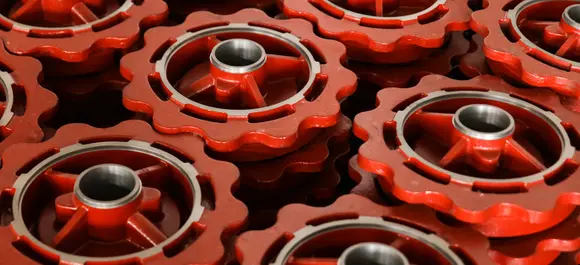Mobile:+86-311-808-126-83
Email:info@ydcastings.com
12 inch dust collector impeller
Understanding the 12-Inch Dust Collector Impeller A Key Component for Effective Dust Collection
In industries where woodworking, metalworking, and other processes generate fine particulate matter, maintaining a clean and safe working environment is essential. One of the most critical components of an efficient dust collection system is the impeller, particularly the 12-inch dust collector impeller. This article explores the importance, function, and selection criteria for this essential part of a dust collection system.
What is a Dust Collector Impeller?
The impeller in a dust collector is a rotating component that generates airflow within the system. It is typically made of durable materials such as aluminum or high-strength plastic to withstand the abrasive nature of dust and debris. A 12-inch impeller refers to the diameter of this component, which has a significant impact on the performance of the dust collector.
The Function of the Impeller
The primary function of the impeller is to draw in air contaminated with dust, debris, and other particulate matter. As the impeller rotates, it creates a centrifugal force that accelerates the airflow and pushes it toward the dust collection bags or canister. This not only enhances the efficiency of the dust collection process but also ensures that the air expelled back into the workspace is free from harmful particles.
Importance of the 12-Inch Size
Choosing the right size impeller is crucial for optimizing the performance of a dust collection system. A 12-inch impeller strikes a balance between airflow volume and pressure. It is capable of handling a substantial amount of debris while maintaining enough velocity to prevent blockage in the system. This size is particularly popular among small to medium-sized workshops, where space is limited but efficient dust control is still a priority.
Airflow and Static Pressure
12 inch dust collector impeller

The performance of a dust collector is often measured in terms of airflow (measured in cubic feet per minute, or CFM) and static pressure. The 12-inch impeller can produce a significant amount of airflow, which is vital for transporting dust through the ductwork and into collection bags. However, it is equally important to consider static pressure, which relates to the resistance within the system. Proper engineering of the dust collection system can help balance these two factors, maximizing efficiency.
Selecting the Right Impeller
When choosing a 12-inch impeller for a dust collector, several factors must be taken into account
1. Material Durability Ensure that the impeller is crafted from materials that can handle dust and debris without wear and tear. This is essential for maintaining long-term efficiency and performance. 2. Motor Compatibility The impeller must be compatible with the motor's horsepower and torque. A powerful motor will enhance the performance of the impeller, resulting in more effective dust collection.
3. Airflow Requirements Assess the specific airflow needs of your workshop. Depending on the type of processes conducted, the required CFM will vary, influencing the choice of impeller.
4. Design and Configuration The design of the impeller, including the number of blades and their orientation, can impact its performance. Opt for designs that are known for maximizing airflow and reducing turbulence.
5. Maintenance Considerations Select an impeller that allows for easy maintenance. Dust collection systems require regular cleaning and inspection, and an easy-to-access impeller will facilitate this process.
Conclusion
The 12-inch dust collector impeller is a vital component of any effective dust collection system. Its ability to generate adequate airflow while maintaining performance under various conditions makes it an ideal choice for many workshops. By understanding the functions and essentials of selecting the right impeller, operators can significantly improve their dust collection processes, ensuring a clean, safe, and productive working environment. Investing in a high-quality 12-inch impeller is, therefore, an investment in both efficiency and health for any workshop dealing with airborne particulate matter.
-
Impeller Technology That Powers Precision in Pump SystemsNewsMay.22,2025
-
Valve Durability Begins with Quality Cast Iron ComponentsNewsMay.22,2025
-
Performance Cooling with Advanced Automobile Water Pump SolutionsNewsMay.22,2025
-
How Motor Housing and Oil Pans Shape Engine PerformanceNewsMay.22,2025
-
How Metal Castings Drive Modern Manufacturing EfficiencyNewsMay.22,2025
-
Exploring the Engineering Behind Valve Body CastingsNewsMay.22,2025











